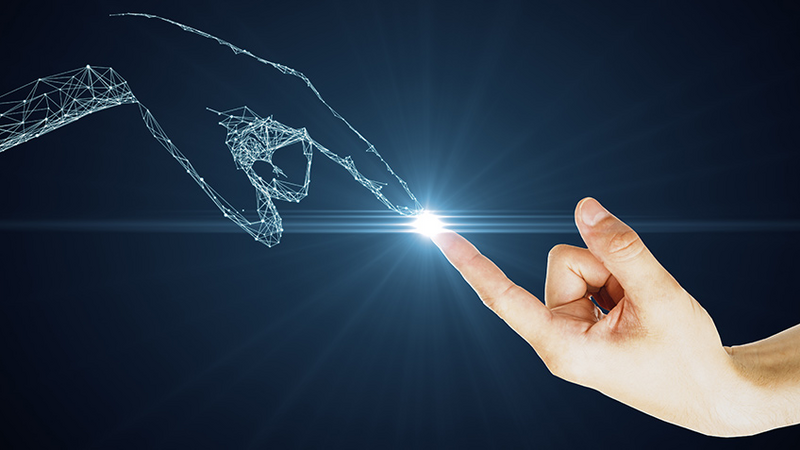Author: Vaishnavi, University of Lucknow
To The Point
Artificial Intelligence (AI) is transforming all facets of human existence. From healthcare to finance, AI technologies are being incorporated into decision-making procedures that were previously reserved for humans. As AI systems develop and start to operate with some degree of independence, the legal field confronts an essential issue: Who is responsible when AI systems inflict damage, breach legal rights, or engage in criminal activities?
In conventional criminal law, accountability is grounded in the core concepts of actus reus (the physical action) and mens rea (the mental intention). These characteristics are fundamentally human qualities, creating a complicated legal issue when associated with machines. If a vehicle powered by AI is involved in a deadly crash or an autonomous system engages in financial deceit, the courts need to decide who is responsible—should the responsibility lie with the developer, the user, the data trainer, or the AI itself? This article aims to examine these challenges through legal principles, global advancements, and the present condition of Indian law.
Use Of Legal Jargon
Mens rea – The awareness or intent of committing a wrongful act that forms a component of a crime.
Actus reus – The tangible behavior or action that forms part of criminal liability.
Vicarious liability – Holding one individual accountable for the behavior of another.
Strict liability – Legal obligation for damages regardless of whether the individual deemed strictly liable was at fault or negligent.
Negligence – Failing to fulfil a duty that results in injury or damage to someone else.
Legal personhood – The ability of an entity to possess legal rights and responsibilities.
The Proof
Technological Autonomy and Legal Gaps
AI systems, especially those employing machine learning, possess the ability to make choices without human involvement. Such choices may occasionally result in unexpected outcomes, complicating the task of determining direct responsibility. For example, if a self-driving vehicle disregards a red light and results in a death, ought the software creator to be accountable for the event? Or the vehicle owner who lacked control at that moment?
At present, Indian legal structures like the Indian Penal Code, 1860 and the Information Technology Act, 2000 fall short in tackling the complexities introduced by this level of AI autonomy. These laws focus on human agency and do not address the issue of liability regarding machines making independent decisions.
Comparative Global Developments
Worldwide, authorities and legal institutions are recognizing this discrepancy. In 2017, the European Parliament proposed a resolution recommending that certain sophisticated autonomous systems might be awarded “electronic personhood” to address liability issues. Even though this proposal hasn’t been enacted, it underscores the pressing need for jurisdictions to adjust.
In the United States, liability related to AI is typically addressed under tort law, especially product liability, which holds manufacturers accountable for harmful defective products. In Japan and South Korea, discussions regarding AI and liability are also broadening to include civil and criminal legal changes. China is also concentrating on integrating ethical AI frameworks into its legal system.
Human Responsibility in the AI Framework
Numerous stakeholders participate in the lifecycle of an AI system:
Developers and Programmers – individuals who create the code and instruct the model.
Producers – who develop the tangible systems or platforms that incorporate AI.
Data Providers – entities that provide the information shaping AI behavior.
Final Users – who implement and manage AI systems
Each of these parties could potentially be held liable under existing doctrines such as negligence, product liability, or vicarious liability.
Abstract
This piece explores the intricate overlap between artificial intelligence and criminal responsibility, especially within Indian legal frameworks. With the increasing autonomy and decision-making abilities of AI systems, incidents of AI-related harm are occurring more often and becoming more complex. The article analyses the conventional legal principles of mens rea and actus reus and how they pertain to non-human entities. It examines worldwide legal reactions, evaluates suggested remedies like digital personhood, and investigates how responsibility might be allocated among parties involved. In the end, the article promotes an equitable legal system that fosters justice and supports innovation.
Case Laws
1. United States v. Athlone Indus., Inc. (1987)
This case established a standard for corporate criminal responsibility in the U.S. It was determined that a corporation may be liable for the criminal actions of its employees if those actions occurred during the course of their employment. The reasoning could be broadened to hold companies responsible for actions carried out by their AI systems that operate under corporate guidance.
2. Ryan v. Ministry of Defence (UK, 2020)
An AI-controlled drone inadvertently targeted a civilian vehicle. Even though the drone functioned autonomously, the Ministry of Defence was held liable, highlighting that developers and operators cannot evade accountability simply because the system operated on its own.
3. Toyota Self-Driving Car Incident (Tokyo, 2022)
A pedestrian was hit by a self-driving Toyota vehicle. The court determined that the vehicle’s AI experienced a software error that resulted in inadequate object recognition. Toyota was found responsible under strict product liability laws, emphasizing that manufacturers have the primary obligation for the products they issue.
4. Nil Case Law in Indian Courts
By 2025, there are no significant Indian cases directly related to criminal liability for AI systems. Nonetheless, as AI becomes more integrated into both public and private sectors, such instances are inevitable. The lack of case law indicates a requirement for legislative action.
Conclusion
The emergence of artificial intelligence brings unique legal difficulties, especially in the area of criminal law. Current frameworks relying on human characteristics such as intention, knowledge, and control struggle to adapt to autonomous systems. The case studies and worldwide trends indicate a critical necessity for change.
India should begin by revising current legislation such as the IPC and IT Act to acknowledge the significance of AI. Legal definitions might require updates to incorporate phrases such as “autonomous agents,” and measures must be established to allocate liability according to fault, negligence, or product safety criteria. Policymakers might also investigate the idea of electronic legal personhood under stringent regulatory supervision.
An equitable strategy must guarantee that developers, manufacturers, and users follow due diligence and ethical principles, while also fostering a supportive atmosphere for innovation. As AI advances, our legal systems must adapt, guaranteeing that justice is neither oblivious to technology nor constrained by obsolete definitions of accountability.
FAQS
Can AI be held criminally liable under current Indian laws?
No. Present Indian criminal laws do not aim to hold non-human entities such as AI systems accountable for crimes.
Who is usually held responsible when AI systems cause harm?
Depending on the situation, liability can fall on developers, manufacturers, or users, based on negligence, product liability, or failure to exercise due care.
Is international law addressing AI and criminal liability?
Not evenly. Some nations are modifying tort and civil law to address AI liability, while others, such as the EU, are exploring new legal frameworks. Criminal responsibility is still mostly unsettled worldwide.
How should India approach AI regulation?
India needs to establish a specific AI legal framework that addresses data privacy, product responsibility, ethical AI development, and user obligations. This framework needs to include regular updates as technology progresses.




